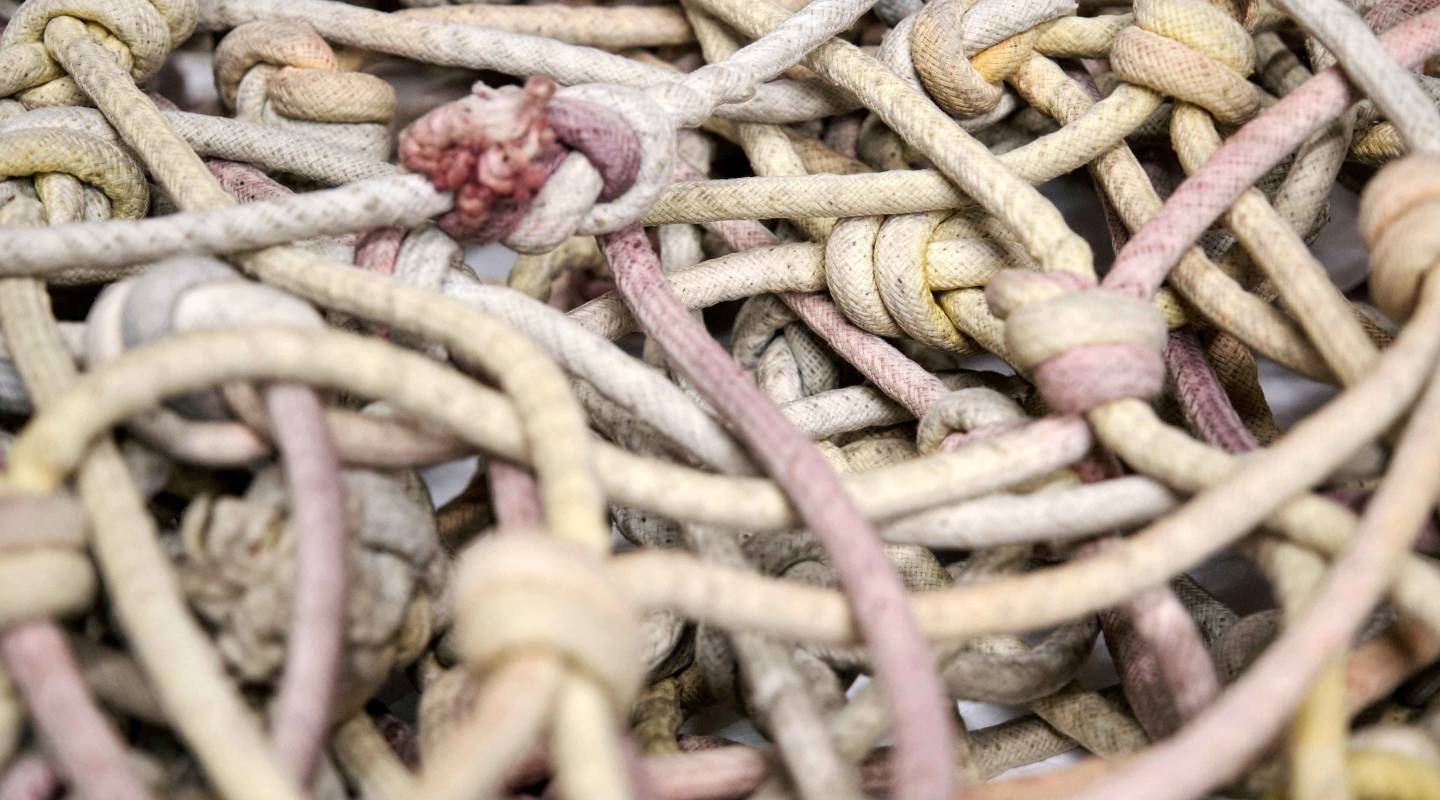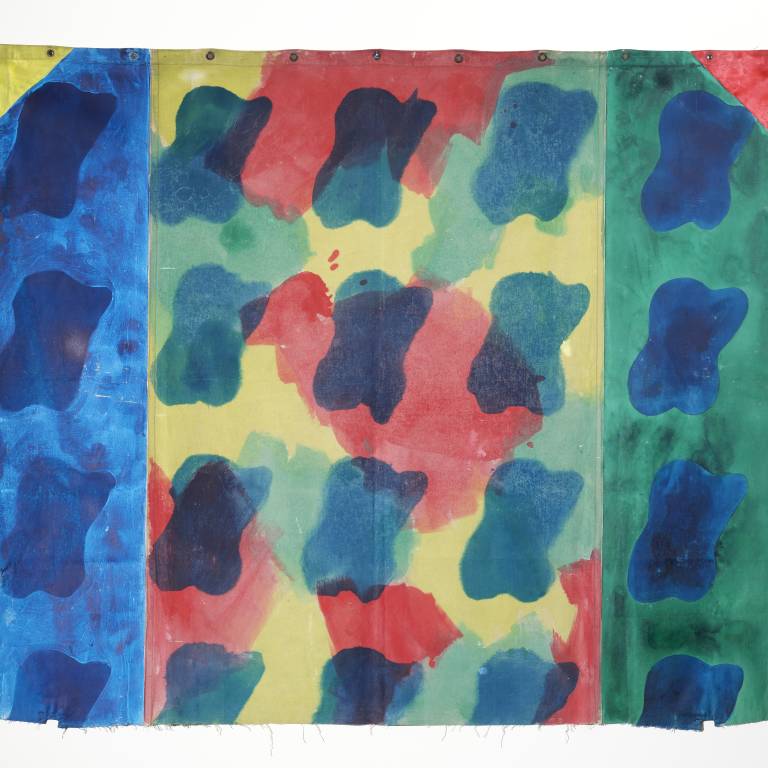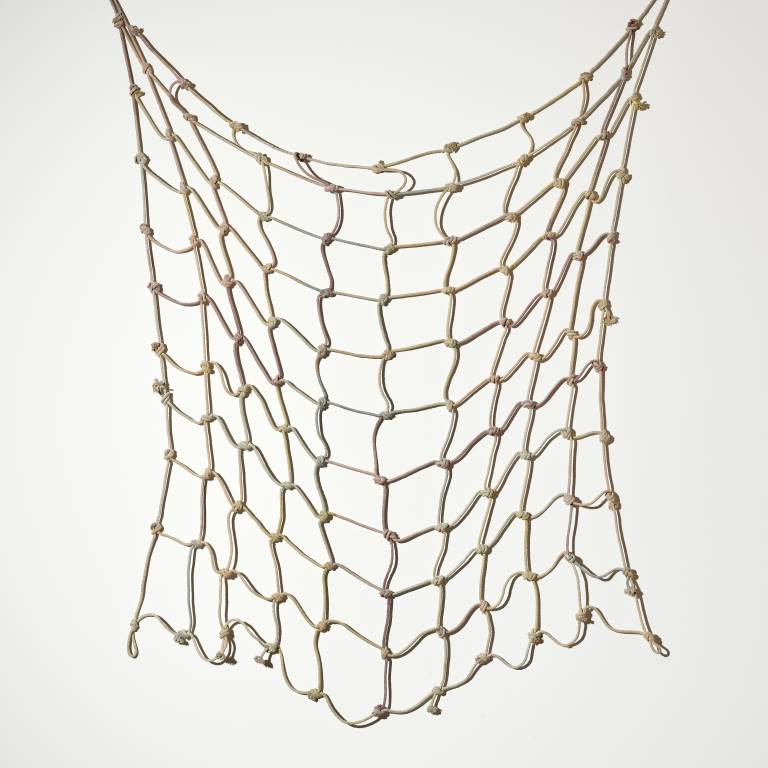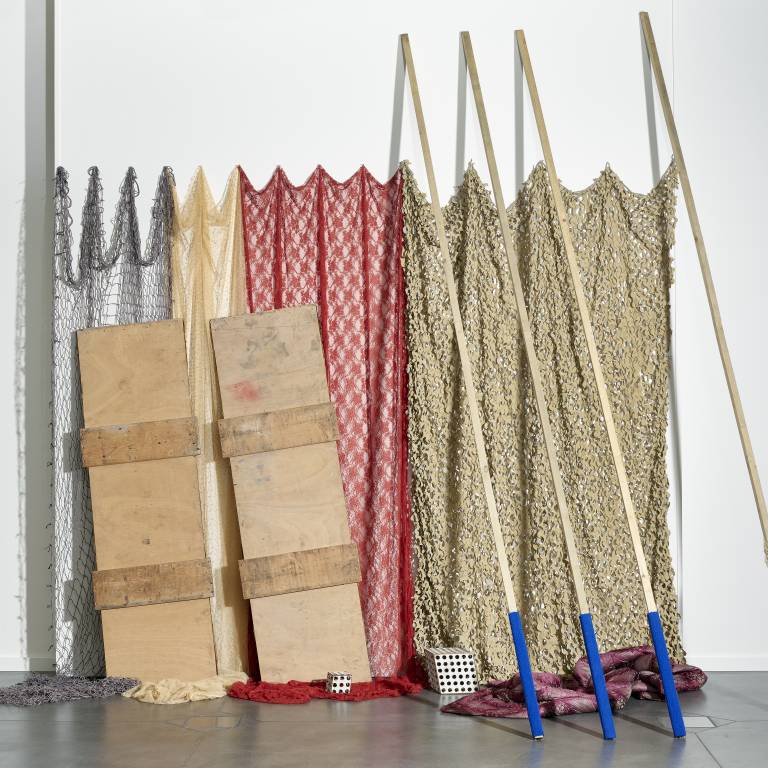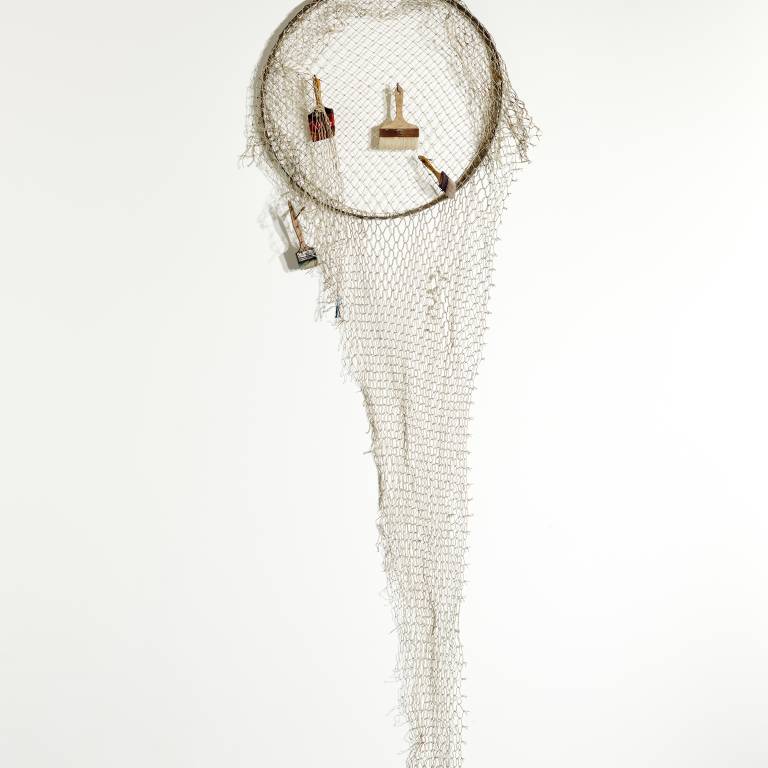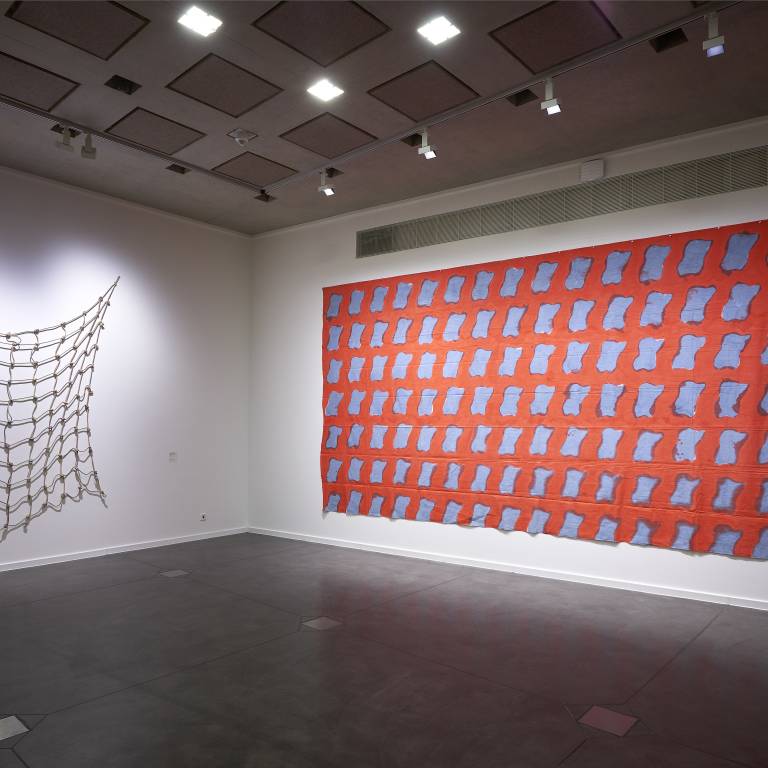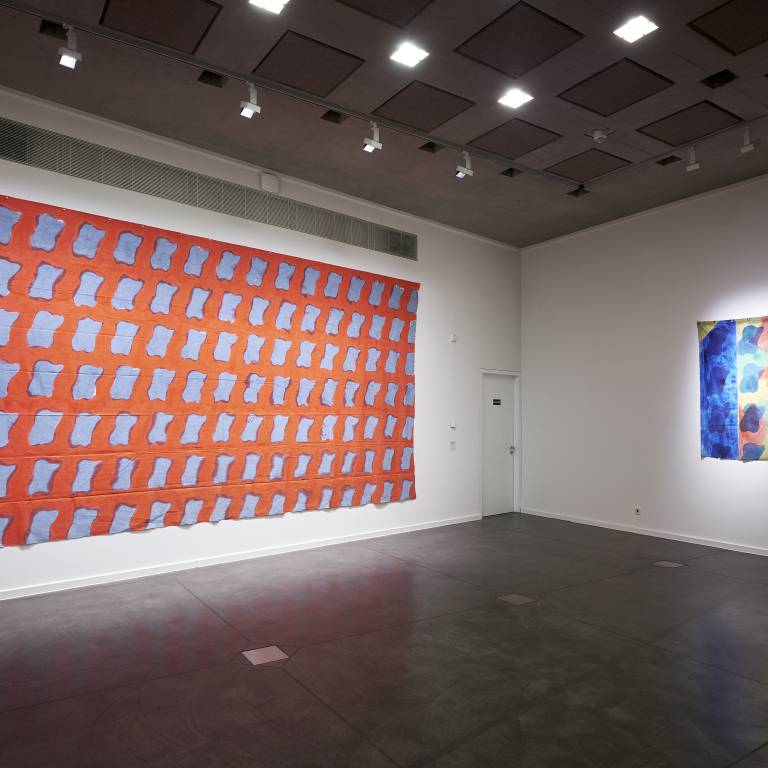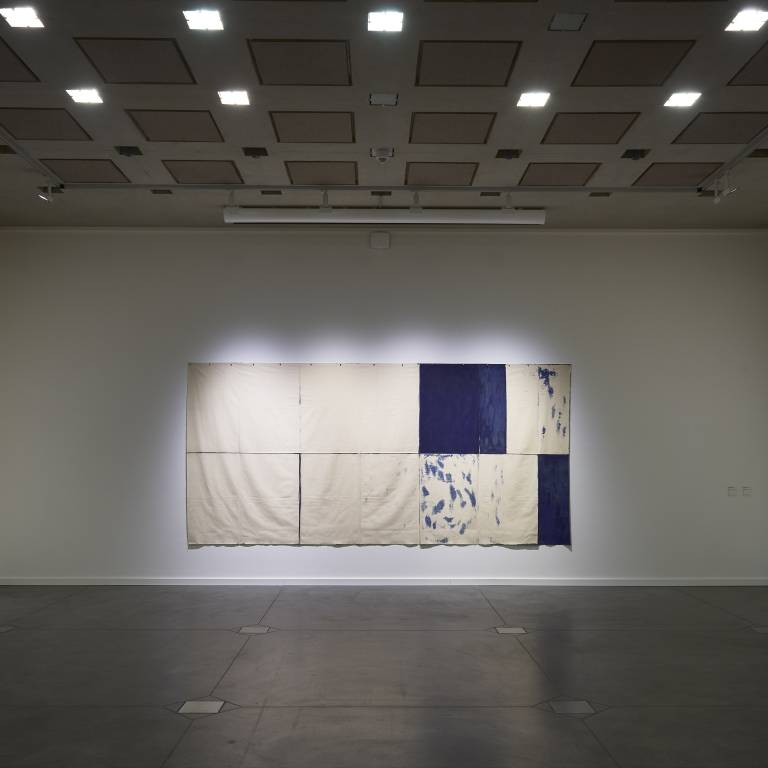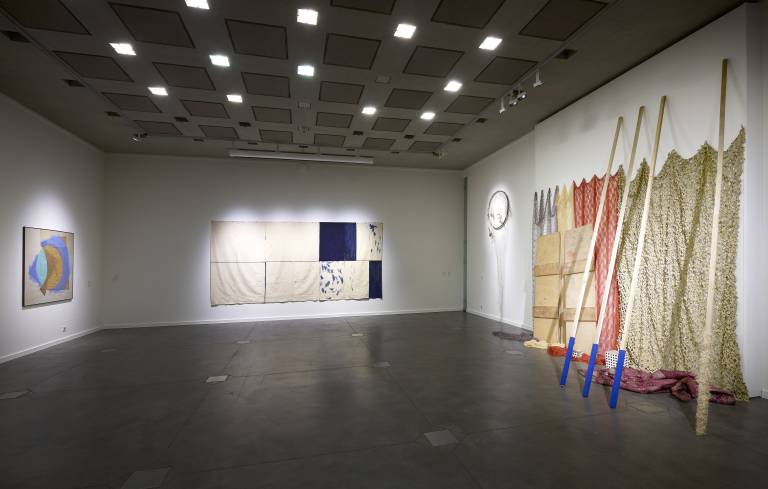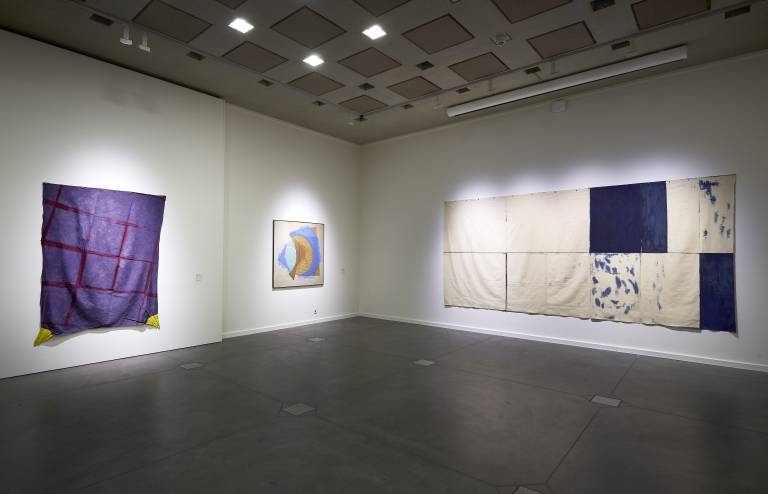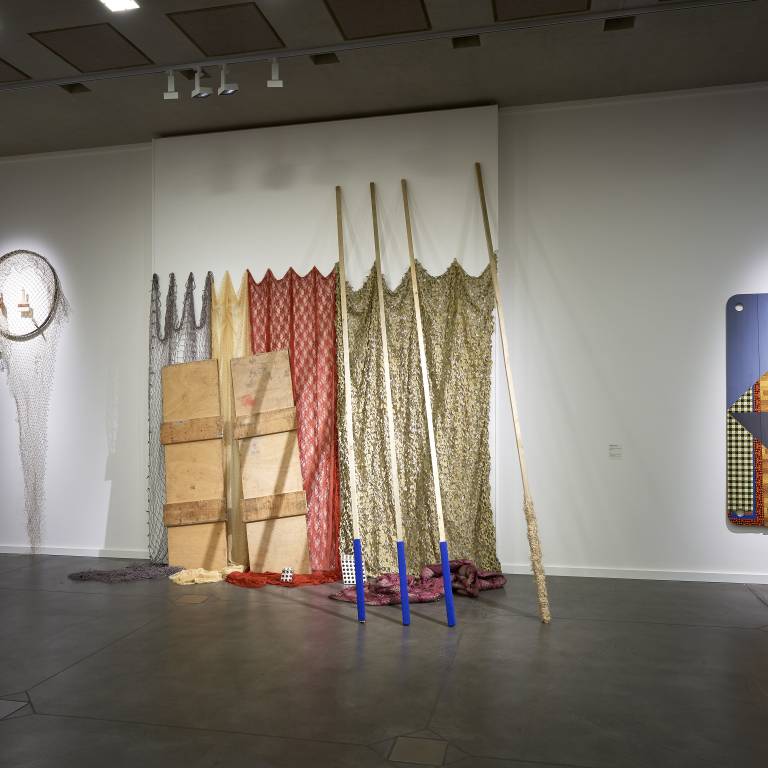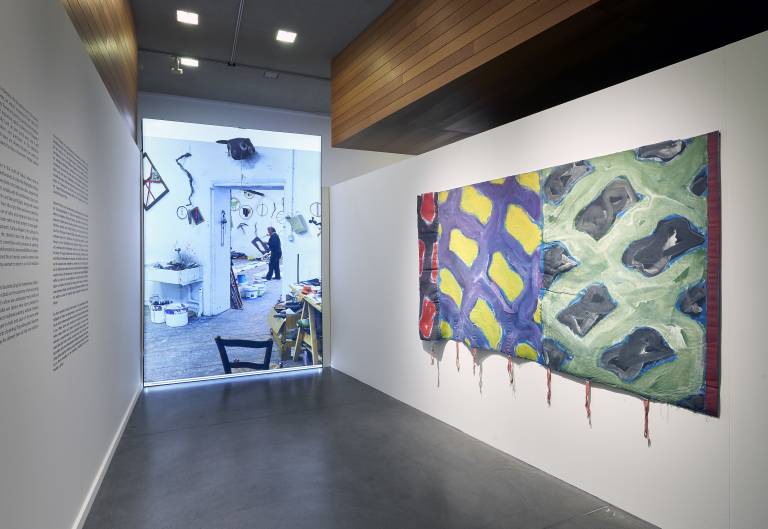One of the strengths of the MNHA’s collection of international art is the ensemble of paintings by Supports/Surfaces, an artistic movement from 1966-1972 which helped to shape contemporary French art, both in painting and sculpture.
The MNHA holds one of the most important public collections of Supports Surfaces at European level. It was carefully built up over many years, and is still actively strengthened with donations and purchases. In this exhibition important acquisitions from recent years are shown, focusing on works by two founding members of the Supports/Surfaces movement: Patrick Saytour (b.1935) and Claude Viallat (b.1936).
Supports/Surfaces had its birthplace in the south of France, where most of the group’s earliest members lived and worked, in cities like Montpellier, Nîmes and Nice. Viallat and Saytour, who were born in the latter two cities, respectively, were part of a group of twelve artists, notably with Vincent Bioulès, Louis Cane, Daniel Dezeuze, Jean-Pierre Pincemin and Bernard Pagès, along with several others who were closely affiliated. From the start, their work was marked by an interest in materiality, a lyrical use of color and expansive ideas of what constitutes a painting.
Demystify the form while proposing new possibilities to explore
The group’s name refers to their attempt to strip painting down to its most essential components. Surface alludes to the canvas of a painting, while support refers to the stretcher bars that gives a painting structural integrity. By exposing the conventions and processes of painting, they hoped to demystify the form while proposing new possibilities to explore. The artists of the group also questioned the art market, as well as certain rules about dating and signing works. They wanted to return to a sort of reductive and essential art practice.
The loosely-knit collective aimed at deconstructing the fundamental
objecthood of painting, at a time when an attack on the autonomy of art
was being mounted all over the world. French culture was undergoing many
swift and profound changes in the 1960’s. Viallat and Saytour have
since continued to explore a working method that rejects traditional
painting, without throwing everything overboard. They managed to hold
onto parts of the form while simultaneously scrapping components of
painting. This philosophical rejection and partial preservation of
painting has allowed them to find new vitality in the form’s endless
flexibility.
The materials used were and still are chosen from the most vulgar or “kitsch”
Within the Supports/Surfaces group, Patrick Saytour (b.1935) has always deliberately occupied a marginal, critical, even ironic position. His work can be defined as an undertaking to deconstruct form, colour, format, the framework of presentation, to use the very words of one of his statements. He then concentrated on a kind of art that questioned the art practice itself, using simple forms and uncomplicated techniques: systematic folding and unfolding, burning,soaking, solarization, etc. The materials used were and still are chosen from the most vulgar or “kitsch”: plastic, synthetic fabrics and furs, which are found in abundance in the markets frequented by immigrant workers.
Claude Viallat„Dezeuze painted stretchers without canvas, I painted canvases without stretchers and Saytour the image of the stretcher on the canvas”
As a representative of the Nouvelle Peinture, Claude Viallat (b.1936) focuses on the primary and structural elements of painting: the canvas, the colour and the surface. Since 1966, he has been working on colour, which is both the subject and the object. The stretcher disappears. The free canvas is painted and against this background of colour, Viallat places stencil prints, repeatedly and in series. „Dezeuze painted stretchers without canvas, I painted canvases without stretchers and Saytour the image of the stretcher on the canvas”, the artist commented a few years later. Viallat is one of the founders and twelve active members of the Supports/Surfaces movement. Most of the works presented here show that for him color is elementary to convey the repeated forms that lend his art coherent dimensions and rhythm, so characteristic of Supports/Surfaces.
